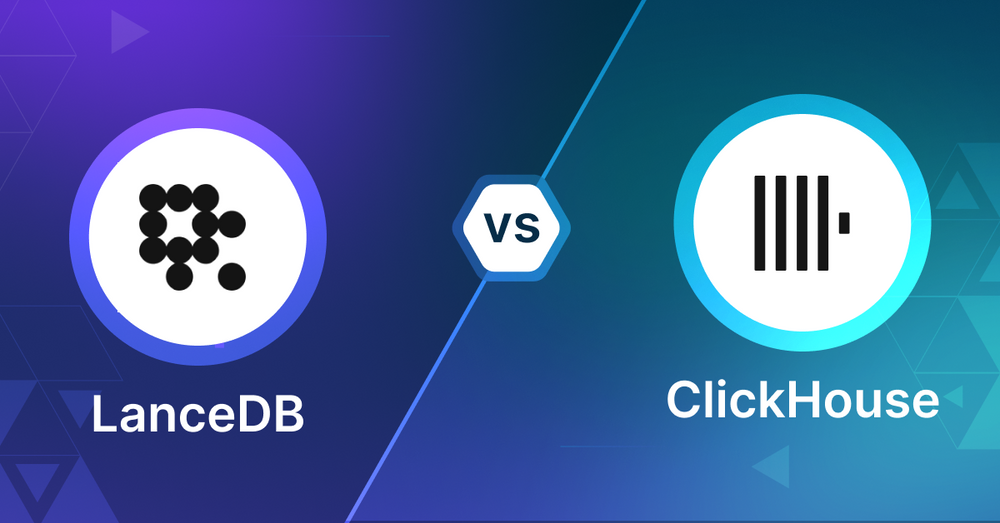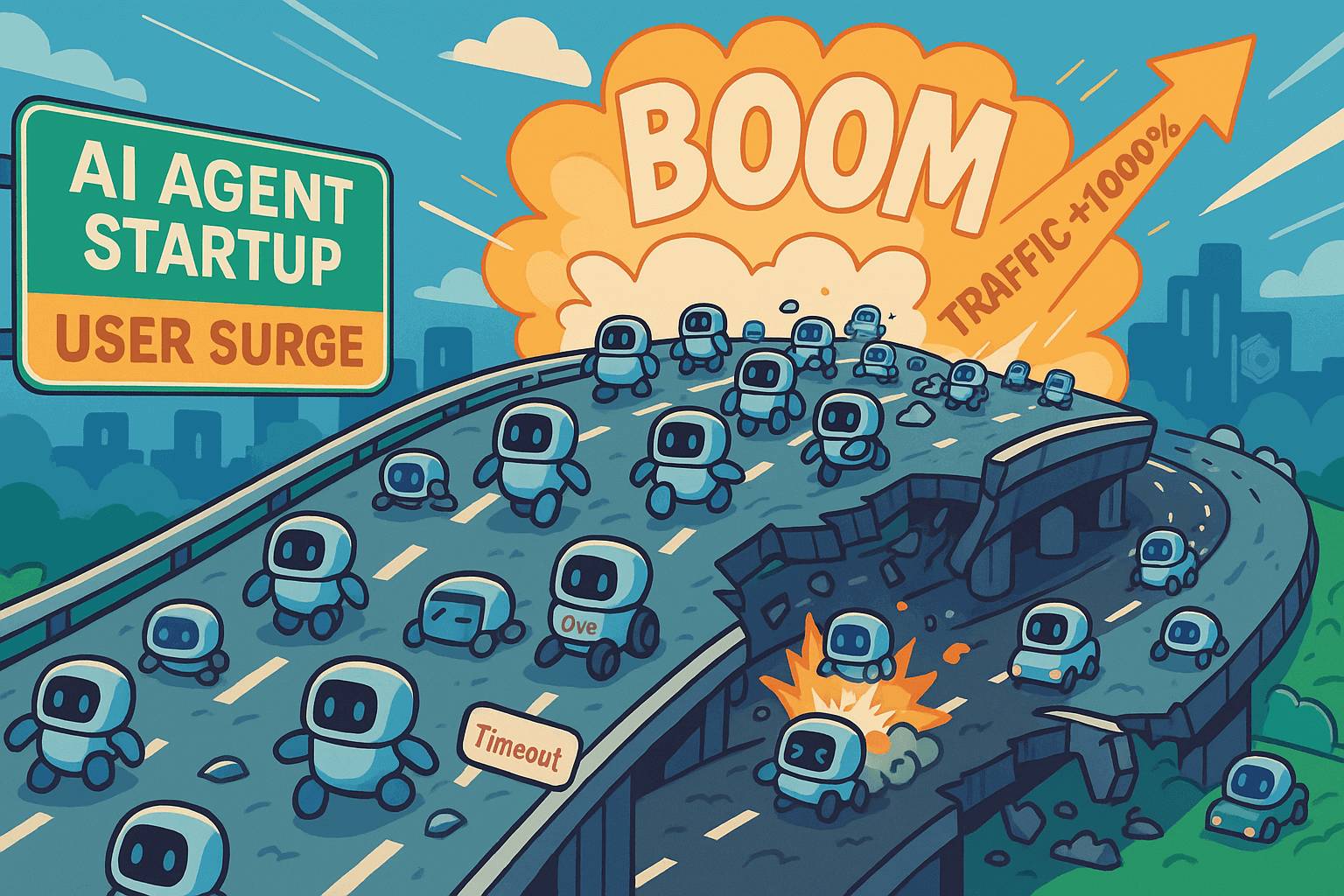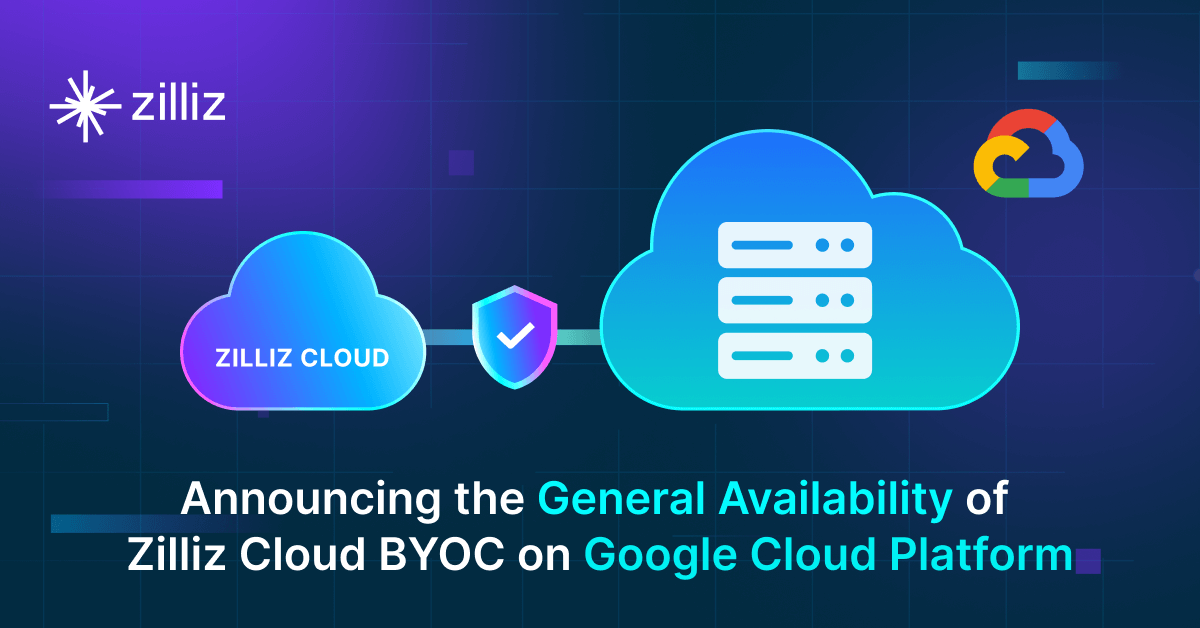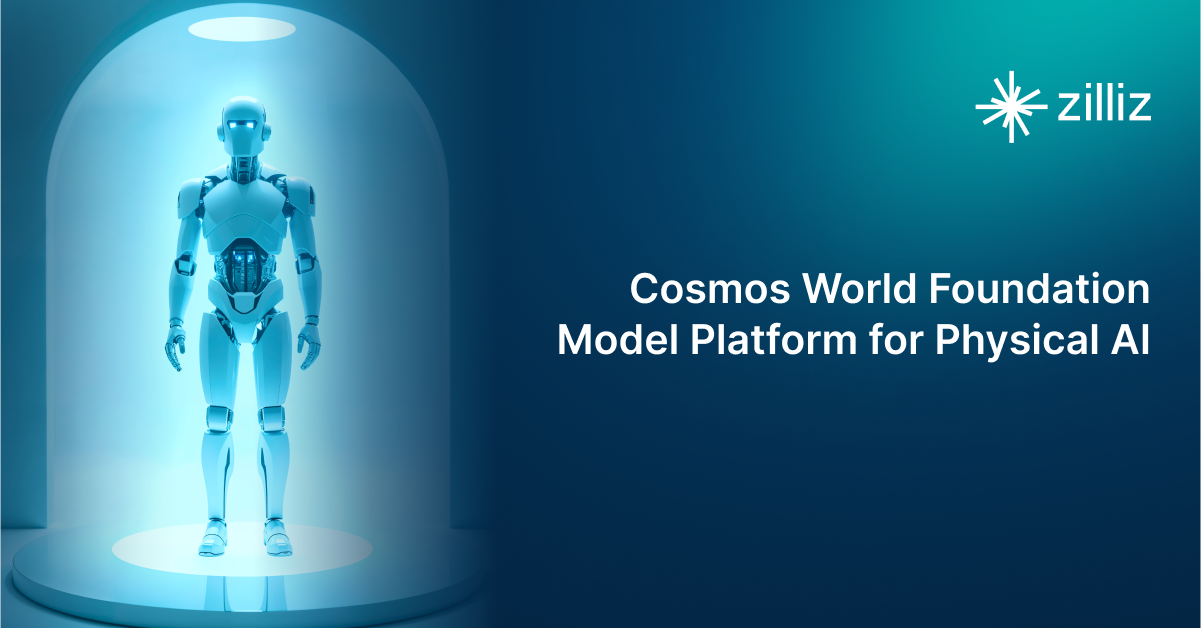LanceDB vs ClickHouse Choosing the Right Vector Database for Your AI Apps

What is a Vector Database?
Before we compare LanceDB and ClickHouse, let's first explore the concept of vector databases.
A vector database is specifically designed to store and query high-dimensional vectors, which are numerical representations of unstructured data. These vectors encode complex information, such as the semantic meaning of text, the visual features of images, or product attributes. By enabling efficient similarity searches, vector databases play a pivotal role in AI applications, allowing for more advanced data analysis and retrieval.
Common use cases for vector databases include e-commerce product recommendations, content discovery platforms, anomaly detection in cybersecurity, medical image analysis, and natural language processing (NLP) tasks. They also play a crucial role in Retrieval Augmented Generation (RAG), a technique that enhances the performance of large language models (LLMs) by providing external knowledge to reduce issues like AI hallucinations.
There are many types of vector databases available in the market, including:
- Purpose-built vector databases such as Milvus, Zilliz Cloud (fully managed Milvus)
- Vector search libraries such as Faiss and Annoy.
- Lightweight vector databases such as Chroma and Milvus Lite.
- Traditional databases with vector search add-ons capable of performing small-scale vector searches.
LanceDB is a serverless vector database and ClickHouse is an open-source column-oriented database with vector search as an add-on. This post compares their vector search capabilities.
LanceDB: Overview and Core Technology
LanceDB is an open-source vector database for AI that stores, manages, queries and retrieves embeddings from large-scale multi-modal data. Built on Lance, an open-source columnar data format, LanceDB has easy integration, scalability and cost effectiveness. It can run embedded in existing backends, directly in client applications or as a remote serverless database so it’s versatile for many use cases.
Vector search is at the heart of LanceDB. It supports both exhaustive k-nearest neighbors (kNN) search and approximate nearest neighbor (ANN) search using an IVF_PQ index. This index divides the dataset into partitions and applies product quantization for efficient vector compression. LanceDB also has full-text search and scalar indices to boost search performance across different data types.
LanceDB supports various distance metrics for vector similarity, including Euclidean distance, cosine similarity and dot product. The database allows hybrid search combining semantic and keyword-based approaches and filtering on metadata fields. This enables developers to build complex search and recommendation systems.
The primary audience for LanceDB are developers and engineers working on AI applications, recommendation systems or search engines. Its Rust-based core and support for multiple programming languages makes it accessible to a wide range of technical users. LanceDB’s focus on ease of use, scalability and performance makes it a great tool for those dealing with large scale vector data and looking for efficient similarity search solutions.
Click House: Overview and Core Technology
ClickHouse is an open-source real-time OLAP database known for its full SQL support and high-speed query processing. It excels at handling analytical queries due to its fully parallelized query pipeline, allowing it to perform vector search operations quickly. Its high levels of compression, customizable through codecs, enable ClickHouse to store and query large datasets effectively. One of its key strengths is that it can handle multi-TB datasets without being constrained by memory, making it a powerful tool for users dealing with large-scale vector data. It also supports filtering and aggregation on metadata, allowing developers to perform complex queries on both vectors and their associated metadata.
ClickHouse integrates vector search functionality through its SQL capabilities, where vector distance operations are treated like any other SQL function. This allows seamless combination with traditional filtering and aggregation, making it ideal for use cases where vector data needs to be queried alongside metadata or other information. Additionally, experimental features like Approximate Nearest Neighbour (ANN) indices offer faster, though approximate, matching capabilities. ClickHouse also supports exact matching through a linear scan over rows, with its parallelized processing ensuring high speed and efficiency.
ClickHouse is an excellent option for vector search when combining vector matching with metadata filtering or aggregation is important. It's especially useful for very large vector datasets that need to be processed in parallel across multiple CPU cores. ClickHouse is also advantageous when SQL support is necessary, and the vector dataset is too large to rely on memory-only indices. Additionally, if you already have related data in ClickHouse or wish to avoid learning another tool for managing millions of vectors, ClickHouse can save you both time and resources. Its strengths lie in fast, parallelized exact matching and handling large datasets, making it suitable for users with advanced search requirements.
ClickHouse stands out as a versatile platform for vector search, particularly when dealing with large datasets that require parallelized processing and when combining vector searches with SQL-based filtering and aggregation. While it may not be as specialized for small, memory-bound datasets or high-QPS scenarios as dedicated vector databases, its ability to handle complex queries, including metadata, makes it a powerful option for developers familiar with SQL who need high-speed vector search capabilities.
Key Differences
Search Methodology
LanceDB: Vector search with built-in k-nearest neighbor (kNN) and approximate nearest neighbor (ANN) search. IVF_PQ index with partitioning and product quantization for efficient vector compression. Hybrid search for semantic and keyword-based search. Good for AI-driven applications.
ClickHouse: Vector search as an extension of SQL query system. Exact matching through parallelized linear scans. Approximate matching with experimental ANN. SQL-centric is so easy to integrate with other analytics workflows, especially for metadata-rich queries.
Key takeaway: Choose LanceDB if you care only about vector search performance and flexibility. Choose ClickHouse if you need metadata filtering and SQL-based analytics.
Data
LanceDB: Embeddings and multi-modal data. Supports structured and unstructured data. Columnar storage for read and write performance on large scale datasets, especially vector-heavy workloads.
ClickHouse: OLAP database. Primarily structured and semi-structured data. Better for scenarios where vector data is part of a bigger dataset with lots of metadata or where aggregation and filtering is important.
Key takeaway: LanceDB is for vector-heavy workloads, ClickHouse for vector + structured data.
Scalability and Performance
LanceDB: Scalable through multiple deployment options: embedded in application, serverless database, part of a bigger backend. Optimizes vector search and scales well for large datasets.
ClickHouse: High-speed parallelized processing. Handles multi-terabyte datasets. Performance on mixed workloads (vector search + complex SQL queries) is a strong point.
Key takeaway: Choose LanceDB for AI-specific scalability and ClickHouse for large-scale mixed workloads that require heavy parallelization.
Flexibility and Customization
LanceDB: Flexible indexing and supports multiple distance metrics (Euclidean, cosine similarity, dot product). Developers can fine-tune hybrid search to combine semantic and keyword-based search.
ClickHouse: Customization through SQL functions. Developers can write complex queries combining vector operations with regular SQL features.
Key takeaway: LanceDB is for super specialized vector operations, ClickHouse for more general query flexibility.
Integration and Ecosystem
LanceDB: Integrates with AI and machine learning workflows, supports multiple languages and embeddings directly.
ClickHouse: Part of analytics ecosystem. Good choice if your project already uses ClickHouse for OLAP workloads or if SQL compatibility is important.
Key takeaway: LanceDB is for AI-first workflows, ClickHouse is more ecosystem-agnostic and integrates into analytics pipelines.
Usability
LanceDB: Developer-focused, easy to set up, strong documentation, API for vector operations.
ClickHouse: Powerful but SQL-centric so may have a higher learning curve for users not familiar with SQL or big data.
Key takeaway: LanceDB has a more developer-friendly learning curve for vector-specific use cases.
Cost
LanceDB: Open-source and cost-effective for small deployments or embedded use. Serverless options to control costs for variable workloads.
ClickHouse: Open-source but may have higher operational costs due to need for lots of compute resources to process large datasets.
Key takeaway: LanceDB is for smaller scale or embedded use, ClickHouse for enterprise use.
Security
LanceDB: Has basic security features like access control and integration with secure backends. Security is still evolving.
ClickHouse: Has robust security features: encryption, authentication, granular access controls. Enterprise ready for secure deployments.
Key takeaway: ClickHouse is for deployments where enterprise-grade security is required.
When to Choose LanceDB
LanceDB is for projects that are AI and machine learning heavy where vector embeddings are the core of the application. It’s great for use cases like recommendation systems, semantic search and similarity based applications that require high performance vector operations. It has built in kNN and ANN search, hybrid search and cost effective deployment options so it’s perfect for developers handling large scale distributed data with multi-modal embeddings. Plus it’s developer friendly and supports multiple programming languages so it’s easy to implement for AI workflows.
When to Choose ClickHouse
ClickHouse is for scenarios where vector search is just one part of a larger analytics pipeline. It’s great for applications that require full text search, SQL based analytics and vector operations. Use cases like customer behavior analysis, log analysis and multi-dimensional reporting benefit from ClickHouse’s high speed parallelized query processing and ability to handle multi-terabyte datasets. It’s especially good if your team is already familiar with SQL or uses ClickHouse for other OLAP workloads as it doesn’t require introducing additional tools.
Conclusion
LanceDB is for AI first projects that require efficient vector similarity search, hybrid capabilities and developer centric design, ClickHouse is for analytics heavy workflows that combine vector operations with traditional SQL queries on large datasets. Choose LanceDB for embedding heavy applications and ClickHouse for vector search in analytics systems. By considering the scale, data type and performance requirements of your workload, you can choose the right tool for your project.
Read this to get an overview of LanceDB and ClickHouse but to evaluate these you need to evaluate based on your use case. One tool that can help with that is VectorDBBench, an open-source benchmarking tool for vector database comparison. In the end, thorough benchmarking with your own datasets and query patterns will be key to making a decision between these two powerful but different approaches to vector search in distributed database systems.
Using Open-source VectorDBBench to Evaluate and Compare Vector Databases on Your Own
VectorDBBench is an open-source benchmarking tool for users who need high-performance data storage and retrieval systems, especially vector databases. This tool allows users to test and compare different vector database systems like Milvus and Zilliz Cloud (the managed Milvus) using their own datasets and find the one that fits their use cases. With VectorDBBench, users can make decisions based on actual vector database performance rather than marketing claims or hearsay.
VectorDBBench is written in Python and licensed under the MIT open-source license, meaning anyone can freely use, modify, and distribute it. The tool is actively maintained by a community of developers committed to improving its features and performance.
Download VectorDBBench from its GitHub repository to reproduce our benchmark results or obtain performance results on your own datasets.
Take a quick look at the performance of mainstream vector databases on the VectorDBBench Leaderboard.
Read the following blogs to learn more about vector database evaluation.
Further Resources about VectorDB, GenAI, and ML
- What is a Vector Database?
- LanceDB: Overview and Core Technology
- Click House: Overview and Core Technology
- Key Differences
- When to Choose LanceDB
- When to Choose ClickHouse
- Conclusion
- Using Open-source VectorDBBench to Evaluate and Compare Vector Databases on Your Own
- Further Resources about VectorDB, GenAI, and ML
Content
Start Free, Scale Easily
Try the fully-managed vector database built for your GenAI applications.
Try Zilliz Cloud for FreeKeep Reading

Why Not All VectorDBs Are Agent-Ready
Explore why choosing the right vector database is critical for scaling AI agents, and why traditional solutions fall short in production.

Announcing the General Availability of Zilliz Cloud BYOC on Google Cloud Platform
Zilliz Cloud BYOC on GCP offers enterprise vector search with full data sovereignty and seamless integration.

Cosmos World Foundation Model Platform for Physical AI
NVIDIA’s Cosmos platform pioneers GenAI for physical applications by enabling safe digital twin training to overcome data and safety challenges in physical AI modeling.
The Definitive Guide to Choosing a Vector Database
Overwhelmed by all the options? Learn key features to look for & how to evaluate with your own data. Choose with confidence.